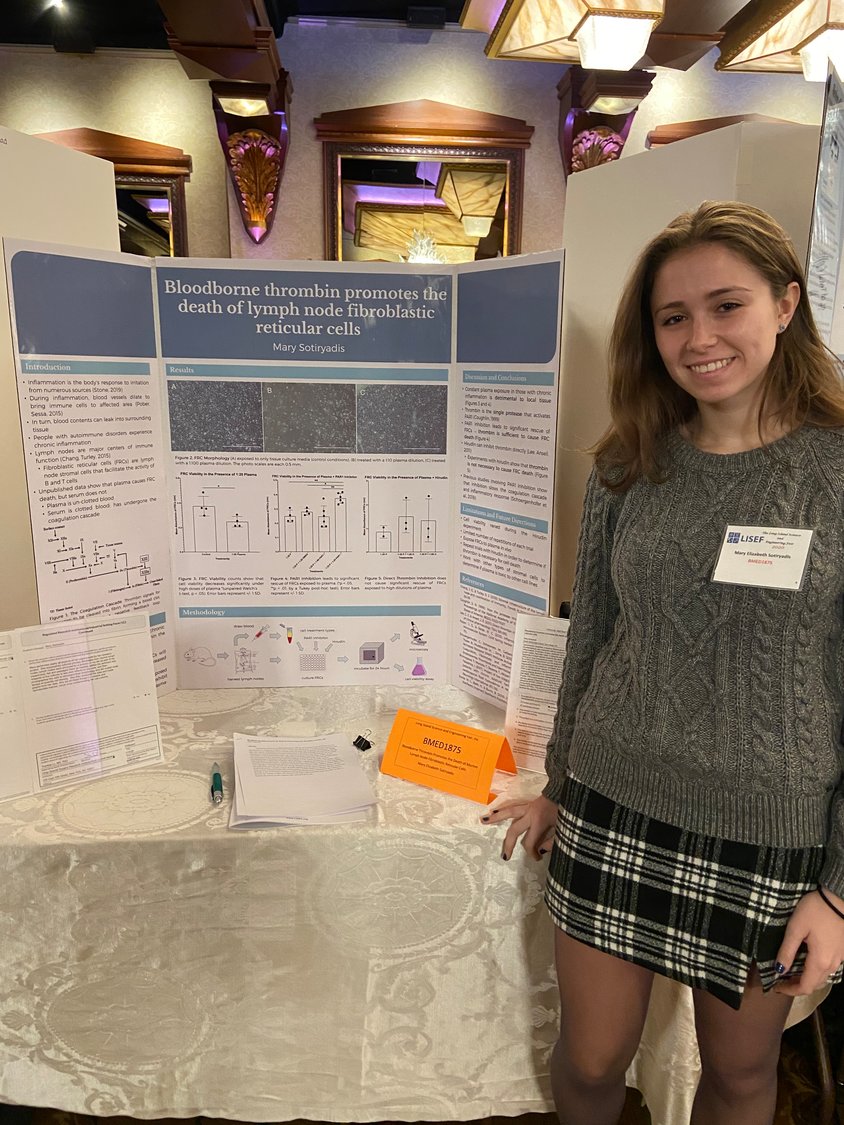NSHS senior Mary Sotiryadis is ISEF Regeneron finalist
North Shore High School senior Mary Sotiryadis said she was proud of the work done by her classmates in the school’s science research program this year. In January, seniors Kyra McCreery and Keaton Danseglio were named semifinalists in the Regeneron Science Talent Search, and McCreery went on to the finals. Now Sotiryadis has been named a finalist in the Regeneron International Science and Engineering Fair.
“Mary’s incredible,” said NSHS science research teacher Dr. Molly Mordechai. “She is a really well-balanced kid, but she works hard and she’s really motivated … She’s also a really kind, caring person.”
Last summer, Sotiryadis, now 18, worked in an autoimmunity and inflammation lab at the Hospital for Special Surgery in Manhattan, inspired by an in interest in medicine. She took part in a project researching the death of specific cells when exposed to blood plasma. Through a process of trial and error, she discovered that thrombin, an enzyme that aids in blood clotting, can cause tissue cell death and result in painful conditions like chronic inflammation and rheumatoid arthritis.
“Now it’s my turn, and it feels pretty good, because I worked so hard over the summer,” Sotiryadis said. “It’s good to know your hard work will play off in the end, especially putting so much time into research.”
“When most kids were working on their tan,” Mary’s father, Adam, said, “Mary was working for a cure to rheumatoid arthritis.”
Sotiryadis presented her project virtually to scientists in early April, because the New York fair, an earlier round of the competition which typically takes place in Queens was forced to shut down by the coronavirus pandemic. Students submitted videos of their presentations, and a small number faced a “lightning round” of questions about their project from a panel of scientists. Sotiryadis excelled in both.
The ISEF competition differs from the Science Talent Search because it is an international competition that focuses solely on students’ projects, while the talent search looks for scientifically gifted students in the U.S. with strong backgrounds in science. The bulk of Sotiryadis’s work was done in the lab. Mordechai said she helped Sotiryadis with her project in NSHS’s science research class.
Working at Hospital for Special Surgery
At HSS, Sotiryadis was assigned a mentor, post-doctoral fellow Dragos Dasoveanu, who had found that cells died when they were exposed to plasma, and enlisted Sotiryadis to help him find out why.
Dasoveanu said he wanted to give Sotiryadis interesting work that wasn’t a typical high school science project. High school and college students working in labs aren’t often given exciting work, he explained, and he wanted her to take on an assignment that would usually be given to someone with more experience.
Initially worried that she would need a lot of training, Dasoveanu said he was surprised by how quickly Sotiryadis caught on. Dasoveanu only had to show her the experiment protocols once, and she wasn’t afraid to come to him with questions when things weren’t working — which is very important in a lab setting, Dasoveanu said.
“She was very good at picking stuff up and troubleshooting when things aren’t working,” he said. “That’s usually a feature and characteristic you see in more senior grad students.”






